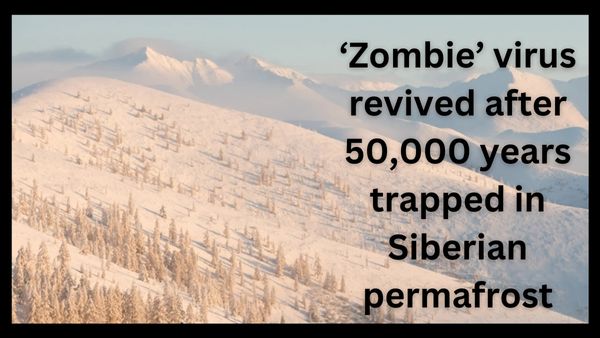‘Zombie’ virus revived after 50,000 years trapped in Siberian permafrost

‘Zombie’ virus revived after 50,000 years trapped in Siberian permafrost. According to a pre-print report, scientists from the French National Centre for Scientific Research have awakened more than a dozen ancient viruses that were once imprisoned deep under the Siberian permafrost.
‘Zombie’ virus revived after 50,000 years
The discovery of 13 previously unknown viruses that have been latent and frozen in ice for tens of millions of years came from seven ancient permafrost samples.
According to the BBC, the same researchers discovered a 30,000-year-old virus that had been frozen in permafrost in 2014. The virus was still able to infect living things, making the finding ground-breaking. However, by resurrecting a virus that is 48,500 years old, they have already surpassed their previous record.
In recognition of its size and the kind of permafrost soil it was discovered in, the ancient virus was given the title Pandoravirus yedoma, as per Science Alert.
In order to evaluate the effects of these ancient viruses on public health, scientists are thawing them out. The Northern Hemisphere’s permafrost, or permanently frozen ground, is thawing, releasing enormous amounts of chemical and microbial contaminants.
The authors caution that some of these “zombie viruses” might be harmful to people. In fact, permafrost thawing has already resulted in human fatalities.
In 2016, a Siberian anthrax epidemic resulted in one kid dying and other patients being hospitalised. According to officials, the outbreak began when a heat wave thawed the permafrost and uncovered a reindeer carcass that had been infected with anthrax in the past. In the outbreak, over 2,300 reindeer perished.
The researchers discovered several subtypes of viruses that had been revived, including pandoraviruses, cedratviruses, megaviruses, pacmanviruses, and pithoviruses. These viruses are referred regarded as “giant” because of their size and ease of detection under light microscopy.
Because of this, scientists think there are numerous smaller viruses that have evaded detection.
In order to determine which viruses were still live and capable of infecting an organism, the researchers used utilised amoeba cells as “viral bait.” The researchers claimed that as a result, their findings were restricted to the detection of “lytic viruses,” as opposed to other viruses that can combine with a host’s DNA.
One bright spot is that these amoeba-infecting viruses only provide a “negligible” threat to humans, according to the study’s authors. But that does not imply that all harmless old viruses exist.
The “risky” hunt for viruses in the “permafrost-preserved remains of mammoths, woolly rhinoceroses, or prehistoric horses,” according to the authors, is a very different matter.
- GTA Online Cops & Crooks 2022 DLC: Release Date, News, Leaks & More
- Computer And Information Technology
- 5G technology and networks
It is unknown whether these ancient viruses may infect a host after being exposed to environmental factors like heat, oxygen, and UV radiation. However, as more permafrost thaws and more people start to occupy the melting Arctic for economic and industrial endeavours, academics think the likelihood of such a situation is rising.






